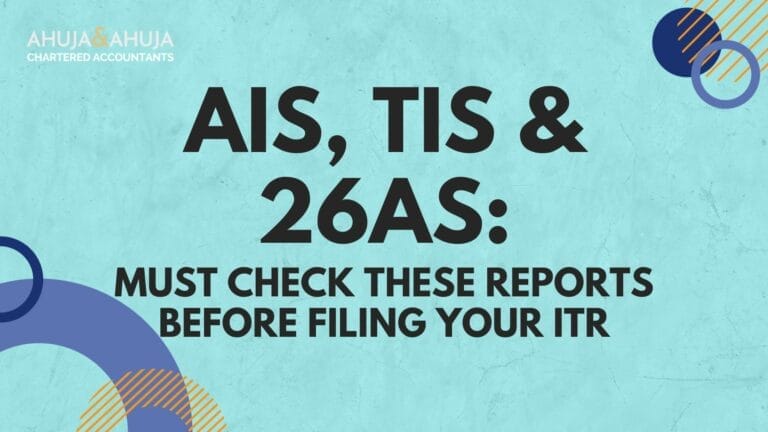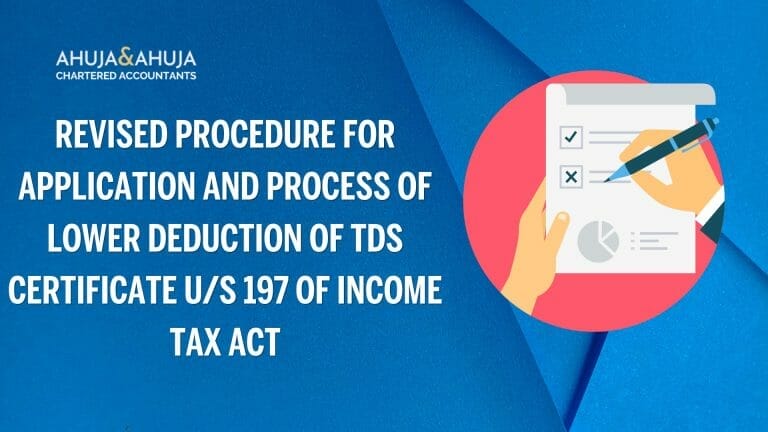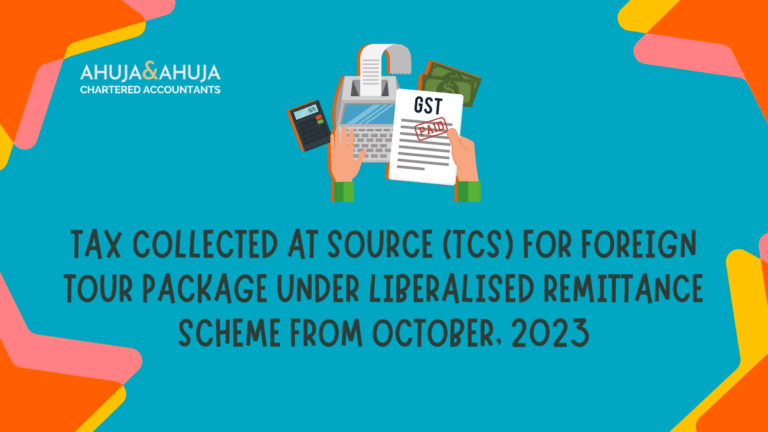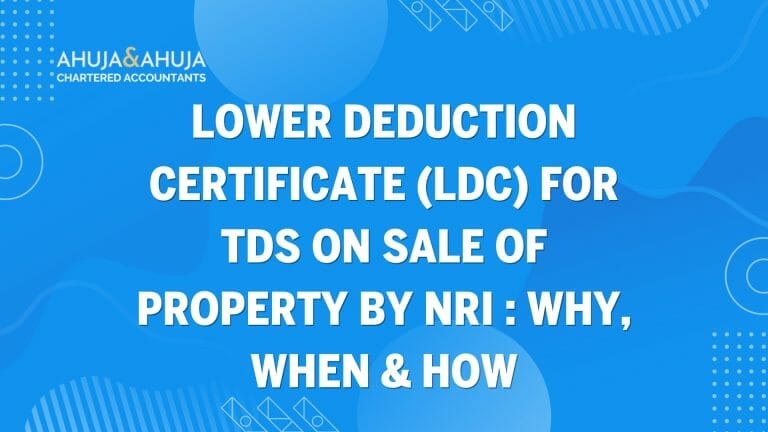Section 194-IB: Understanding the Essentials of Rental Income Tax Deduction
Welcome to the comprehensive guide on Section 194-IB, which is crucial for tenants who are paying a monthly rent exceeding 50,000.
We will try to break down this section to ensure all relevant stakeholders have a clear understanding and can make informed decisions regarding their tax deductions.
This part of the article series will introduce the basic concepts of Section 194-IB and outline its importance in the context of rental payments.
Introduction to Section 194-IB
Section 194-IB of the Income Tax Act became effective from June 1, 2017. It was introduced to simplify the process of TDS (Tax Deducted at Source) on rental payments, making it mandatory for certain individuals and Hindu Undivided Families (HUF) not covered under tax audit as per Section 44AB, to deduct taxes before making rental payments to landlords. Here’s what you need to know:
Who is Applicable?
Individuals and HUFs not liable to tax audit.Rental Threshold: Rs. 50,000 per month as the threshold limit for TDS deduction.
TDS Rate: 5% if the recipient’s PAN is available. In the absence of PAN, the rate escalates to 20%, though the TDS amount shall not exceed the last month’s rent payment.
No TAN Required: The tenants are not required to obtain a Tax Deduction and Collection Account Number (TAN), making it more straightforward for non-corporate taxpayers to comply with the tax laws.
Understanding these key factors can aid in preventing any inadvertent non-compliance which might lead to penalties. For detailed compliance guidance, you might consider consulting certification and attestation services.
Purpose of Section 194-IB
The primary purpose of Section 194-IB is to widen the TDS net by including high-value monthly rentals within its scope.
It ensures that tax on rental income is collected at the source which reduces the burden on tenants and landlords concerning end of year tax liabilities and promotes timely compliance with income tax laws.
Importance of Complying with Section 194-IB
Compliance with Section 194-IB is not just a legal requirement but also offers multiple financial advantages:
- Avoidance of Penalties: Ensures that both tenants and landlords avoid the penalties related to non-deduction or late deduction of TDS.
- Streamlined Taxation Process: Simplifies the tax process since the taxes are deducted and deposited to the government upfront.
- Documentation and Proof: Helps in maintaining proper documentation such as TDS certificates, which are beneficial for both parties come tax filing season.
To fully comply and take advantage of tax benefits, consider filing your income tax returns promptly. Benefits of filing income tax returns extend beyond just compliance, as explained in the article on 6 benefits of filing income tax returns.
Understanding and implementing Section 194-IB is crucial for tenants who are making significant monthly rental payments.
It ensures you remain on the right side of tax laws and benefit from a hassle-free rental transaction. Stay proactive in your tax duties by checking if your PAN is linked with Aadhar as required for smooth TDS processing.
Understanding Section 194-IB: Essentials of Rental Income Tax Deduction
Following the introduction and broader implications of Section 194-IB covered in the first part of this series, we now delve deeper into the procedural aspects, explaining when and how to exactly deduct TDS under this provision.
This part also touches upon compliance details including the necessary forms and their due dates, setting a clearer path for both tenants and landlords in handling TDS on rental payments efficiently.
When to Deduct TDS Under Section 194-IB
One of the most crucial aspects for compliance is knowing the precise timing for TDS deduction. Under Section 194-IB, TDS needs to be deducted at the earlier of the following events:
- The rental amount being credited to the landlord’s account.
- Payment of rent by cash, cheque, or other methods.
It must be noted that the deduction should occur monthly as each rent payment is due or made, and not at the end of the year.
This ensures that the tax obligations are spread throughout the year, easing financial pressure and aligning with the tax payment flow.
Compliance Forms: Form 26QC and Form 16C
Tax deductions and compliance involve specific forms that need to be accurately filled and timely submitted. Here’s a closer look:
Form 26QC: This is a challan-cum-statement form used to deposit the TDS that has been deducted under Section 194-IB. This form acts as a formal record between the tenant who deducts the TDS and the tax authorities. The crucial point to remember is that Form 26QC must be submitted within 30 days from the end of the month in which TDS is deducted. This form can now be conveniently filled and submitted online, which simplifies the process.
Form 16C: Following the deposit of TDS via Form 26QC, the tenant is required to furnish Form 16C to the landlord. This form is essentially the TDS certificate that serves as proof that TDS has been deducted and deposited correctly with the government. The issuance of Form 16C should be done within 15 days of filing Form 26QC.
Both these documents ensure a transparent and traceable mechanism for both parties to track and confirm tax liabilities and payments.
Penalties for Non-Compliance
Not adhering to the rules of Section 194-IB can lead to several penalties which can be avoided with timely actions.
These include:
Interest: If TDS is not deducted on time, an interest of 1% per month is charged from the date the rent was payable to the date TDS is deducted. Additionally, if TDS is deducted but not deposited, an interest of 1.5% per month is charged until the tax is deposited.
Late Fees: In case of delayed filing of Form 26QC, a late filing fee of Rs.200 per day is charged until the form is filed, subject to the total fee not exceeding the TDS amount.
Understanding these penalties can serve as a motivation to comply punctually, thereby avoiding unnecessary financial burdens.
With detailed knowledge of when and how to deduct TDS and the associated forms and penalties under Section 194-IB, tenants can ensure they meet their tax obligations accurately and efficiently.
Good compliance not only helps avoid penalties but also ensures a healthy financial relationship between tenants and landlords.
Essentials of Rental Income Tax Deduction
This segment will provide illustrative examples, address common queries related to the provision, and emphasize key takeaways to ensure that both tenants and landlords are proficient in handling TDS on rental payments effectively.
Practical Examples of Section 194-IB
Example 1: Monthly Rent Payment
Scenario: Mr. Patel, who is not liable for tax audit under Section 44AB, rents an apartment where the monthly rent is Rs. 70,000.
Action: Mr. Patel needs to deduct 5% TDS on the monthly rent, which amounts to Rs. 3,500 (5% of Rs. 70,000). Thus, he should pay Rs. 66,500 to the landlord and deposit Rs. 3,500 as TDS using Form 26QC within the specified deadline.
Example 2: Rent Agreement Crosses Financial Year
Scenario: Ms. Anjali rents a commercial place starting from October 2021 for 18 months with a monthly rent of 55,000.
Action: Ms. Anjali needs to deduct TDS not just annually, but at the end of each financial year during the tenure of the rent agreement, and whenever the rent is paid or credited. She will file Form 26QC for each financial year separately, and provide Form 16C to her landlord accordingly.
These examples demonstrate typical situations that renters might encounter and clearly outline the necessary compliance steps.
Frequently Asked Questions (FAQs)
Is Every Tenant Required to Deduct TDS Under Section 194-IB?
Only those individuals or HUFs who are paying monthly rent exceeding Rs. 50,000 and are not liable to audit under Section 44AB are required to deduct TDS as per Section 194-IB.
Are There Any Exceptions to This TDS Deduction?
Yes, if the monthly rent is below Rs. 50,000, there is no need to deduct TDS under this section. Additionally, this section doesn’t apply to tenants who are subject to tax audit (they may fall under Section 194-I instead).
Can I Pay the TDS Annually?
No, TDS under Section 194-IB should be deducted monthly whenever the rent is paid or credited to the landlord’s account.
What if I Fail to Deduct or Deposit TDS on Time?
Failing to deduct or deposit TDS on time can result in interest charges and penalties. Interest is levied at 1% per month for non-deduction and 1.5% per month for non-deposition after deduction.
Key Takeaways
- Timely Compliance: Ensure TDS deduction and deposition are done every month within the stipulated time frames to avoid penalties.
- Proper Documentation: Always fill out and submit Form 26QC correctly and on time, and ensure Form 16C is issued to the landlord within 15 days of depositing the TDS.
- Stay Informed: Regularly update your knowledge about tax rules and regulations to ensure compliance and optimize your financial decisions.
Summary: TDS on Rent u/s 194IB
Section 194-IB imposes a crucial obligation on specific tenants for TDS deduction on high-value rent payments.
Understanding and adhering to these provisions not only helps in fulfilling legal responsibilities but also secures a transparent and reliable financial interaction with landlords.
With the information and guidelines provided in this three-part series, you are now equipped to navigate the complexities of rental income taxation effectively.
Adhering to these regulations ensures your compliance with tax laws, promoting a financially disciplined approach while reducing the potential for legal repercussions.
Let knowledge empower your financial decisions and lead the way to a compliant and secure financial environment.
Disclaimer
The materials provided herein are solely for educational and informational purposes. No attorney/professional-client relationship is created when you access or use the site or the materials. The information presented on this site does not constitute legal or professional advice and should not be relied upon for such purposes or used as a substitute for professional or legal advice.






